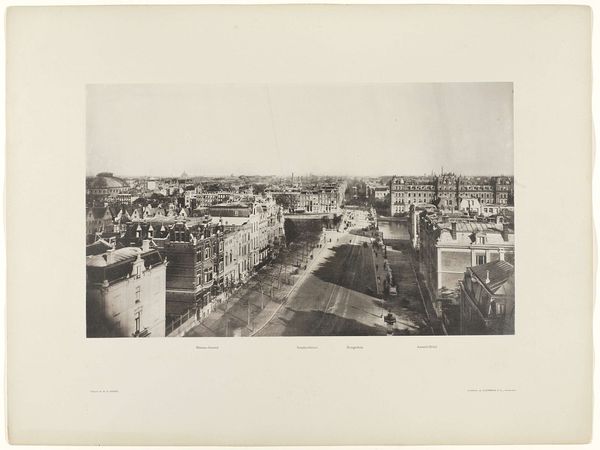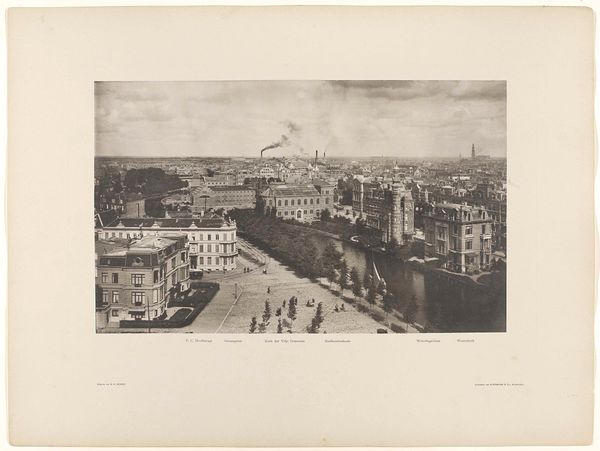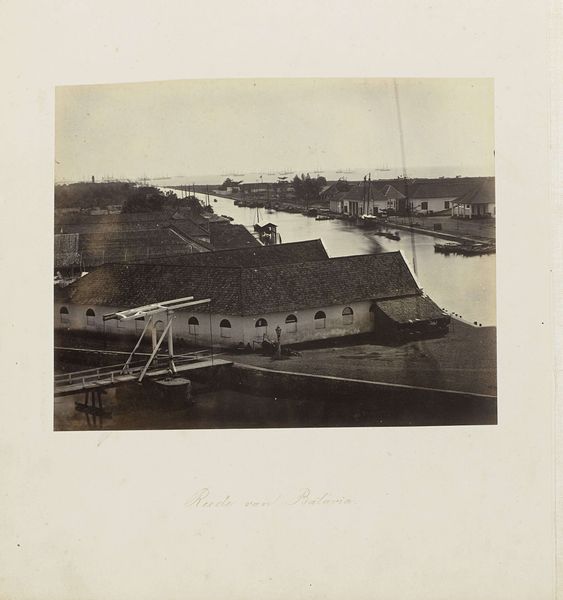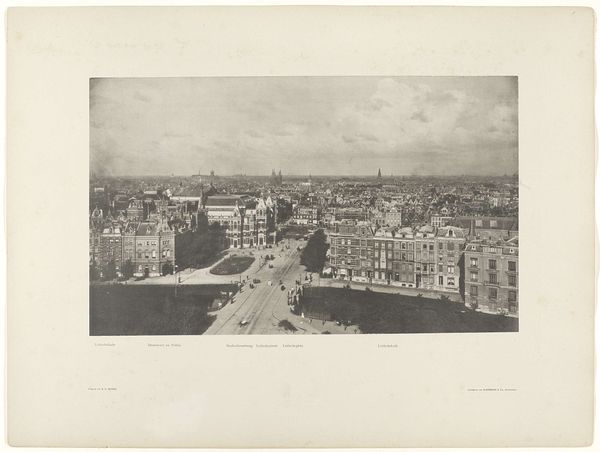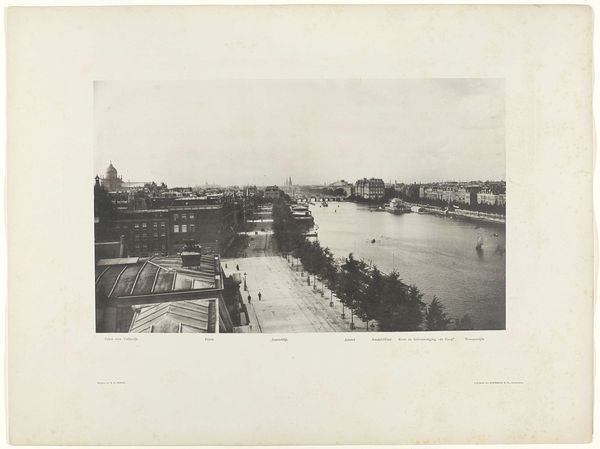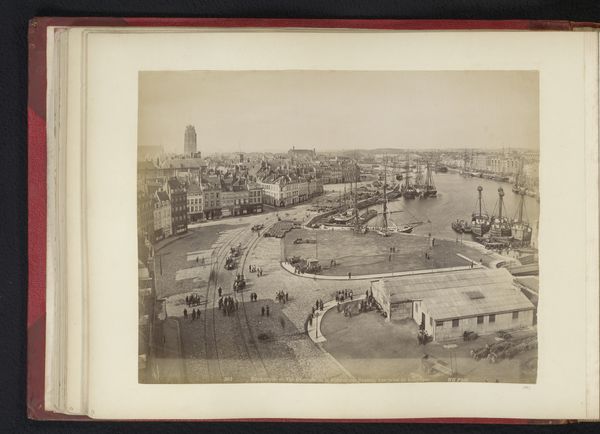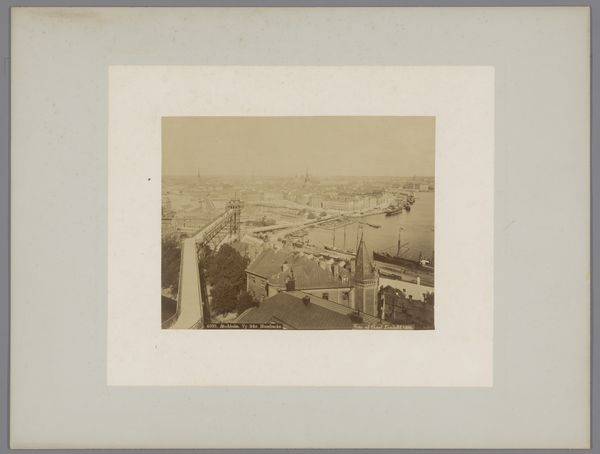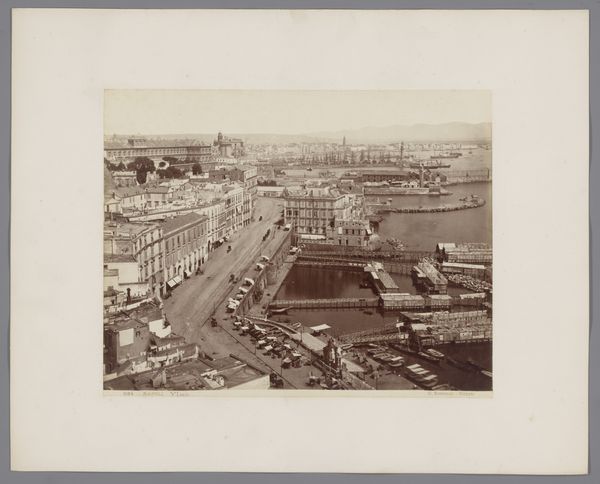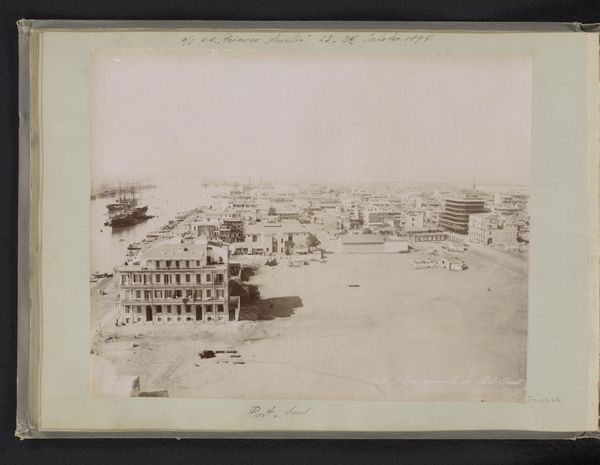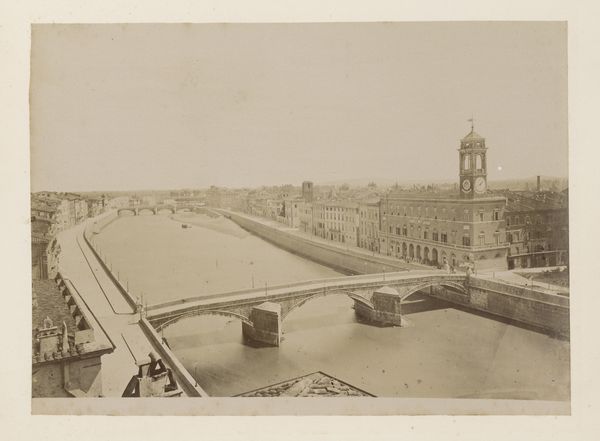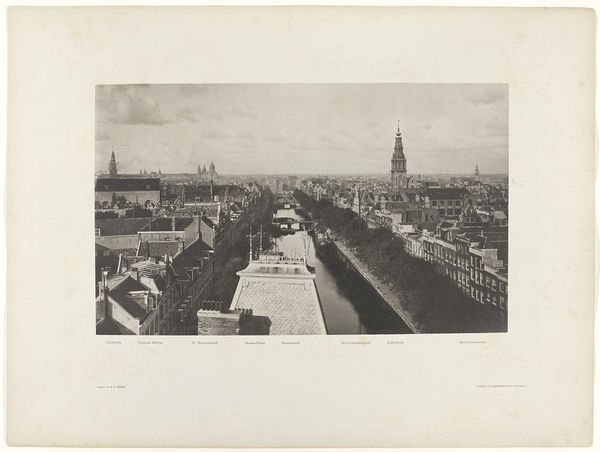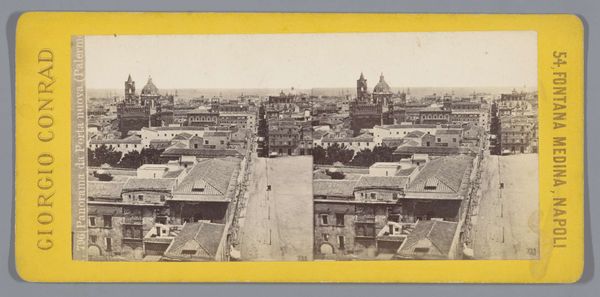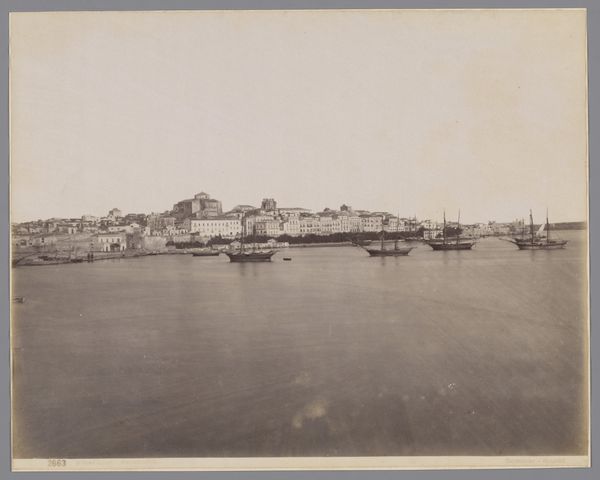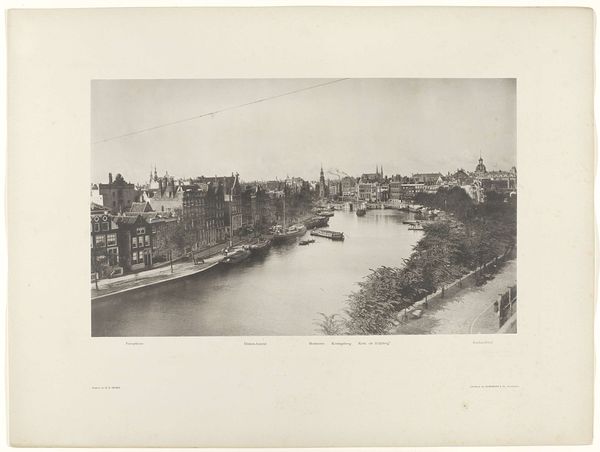
View of the Nieuwe Vaart and Kattenburgervaart, seen from the Oosterkerk 1893 - 1894
0:00
0:00
print, photography
#
print photography
# print
#
landscape
#
photography
#
cityscape
#
realism
Dimensions: height 282 mm, width 478 mm, height 482 mm, width 640 mm
Copyright: Rijks Museum: Open Domain
Curator: Looking at this, I’m immediately struck by the… I don't know… stillness. Like a memory viewed through time's sepia filter, a whispered echo from a past industrial era. What are we actually looking at here? Editor: We're looking at "View of the Nieuwe Vaart and Kattenburgervaart, seen from the Oosterkerk" by Gerrit Hendricus Heinen, a photographic print from around 1893-1894. What interests me is the emphasis on labor and urban growth encoded into this "cityscape". You see the cranes, the docks, the organized chaos – it's all about production and movement. Curator: I do, but I feel something quieter here too. Maybe it's because the hustle is frozen. I feel a ghost-presence, a sense of longing for an era when everything was made with… hands. A kind of… wistful sigh? It’s funny, for something documenting industry it feels strangely romantic. Editor: Romantic or, maybe more aptly, documenting capital expansion, capturing a pivotal moment. Photography at the time, like printmaking, made images accessible and became entangled with ideas about social progress. Notice how the composition places us "above" looking "down." The print reproduces a viewpoint, asserting social power over landscape and industrial expansion. The print is as material as what is photographed; after all the photo becomes the object itself, replicable, disposable, consumed. Curator: Yes! But that feeling of longing returns... knowing these materials came from the Earth and return to the Earth someday! Knowing someone handled this photo, processed it with their own hands. Is the work about industry or fleeting beauty, or our human wish to hold on? It's like this gray image is blooming colors. Editor: Well, if anything it teaches that labor, materials, and urban design all converge to form and shape history. Curator: Ultimately, all that converging *creates* our ephemeral sense of place. Editor: Agreed! A fitting point to reflect. The materiality shaping the immaterial and all that is in between.
Comments
rijksmuseum about 2 years ago
⋮
At the dawn of the 20th century, the rapidly changing city of Amsterdam served as the stage for Heinen, a photographer and decorative painter. He climbed up tall buildings, for instance the then new Rijksmuseum and Central Station, to shoot his panoramas from the top. Along with the growing urbanisation, the photographs also show life on the street. We see skippers with their cargo sailing by, and pavers working on the road.
Join the conversation
Join millions of artists and users on Artera today and experience the ultimate creative platform.
